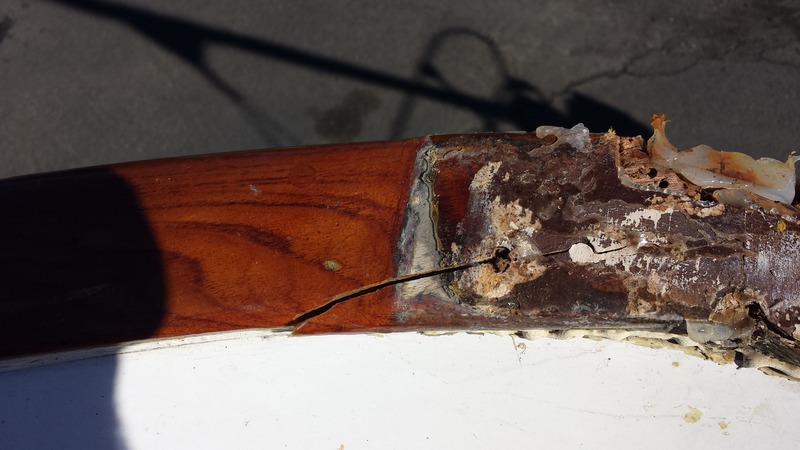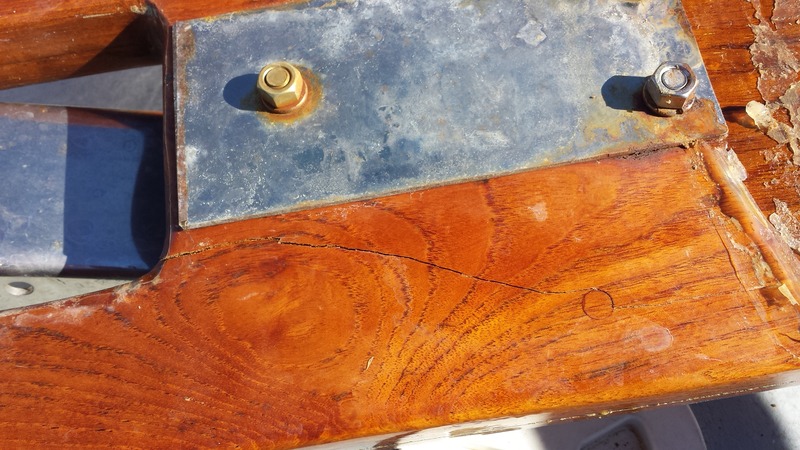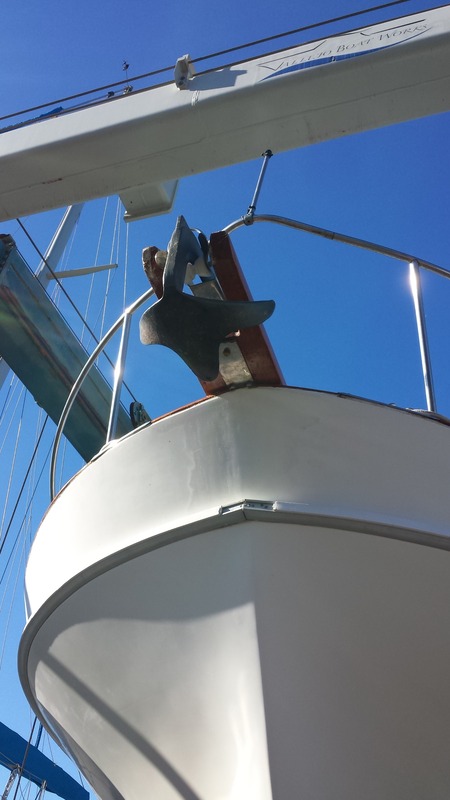- Joined
- Apr 15, 2008
- Messages
- 13,731
- Location
- California Delta
- Vessel Name
- FlyWright
- Vessel Make
- 1977 Marshall Californian 34 LRC
Last month we anchored in SF Bay for a weekend of Blue Angels performances at the annual SF Fleet Week. Thurs and Fri shows were enjoyable and uneventful. Then there was the Saturday show!
We were anchored near a 65 Hatteras during the airshow. The afternoon ebb was flowing with 10-15 kt winds in the opposite direction out of the WSW. We were anchored west of Alcatraz Island for protection from the current, but near the north end and experienced some occasional swings due to eddy currents and winds. For the most part, we were lying on a westerly heading into the wind with him located about 50 ft north of us. We were close enough to talk to each other about our proximity and made adjustments to rode so we were both pleased with the positioning.
During the Blue Angels performance, my wife called me to the bow "right now". The Hatt had drifted west of our position and was now perpendicular to the wind and our alignment into the wind. We were tight on anchor as he drifted slowly into our anchor pulpit. The pulpit poked 2 holes into the masonite panel above his caprail and below his handrail. These holes can be seen in the photo below by the black arrow. Wave action while coupled forced my bow pulpit to pop vertically and pulled a couple lag bolts loose from the top of the pulpit.

I was on the bow as they were closing in within a few feet of our bow, but I was unable and unwilling to place my hand in the boat's path to release the anchor rode from its cleat. Once the boat's slide into us stopped, I was able to release the rode, start engines and back off from the Hatt. No further damage was incurred during the 'uncoupling'.
Here are some shots of the damage:
Pulpit, rub rail and anchor roller damage. The bolts on top of the pulpit have pulled loose from the vertical loads.
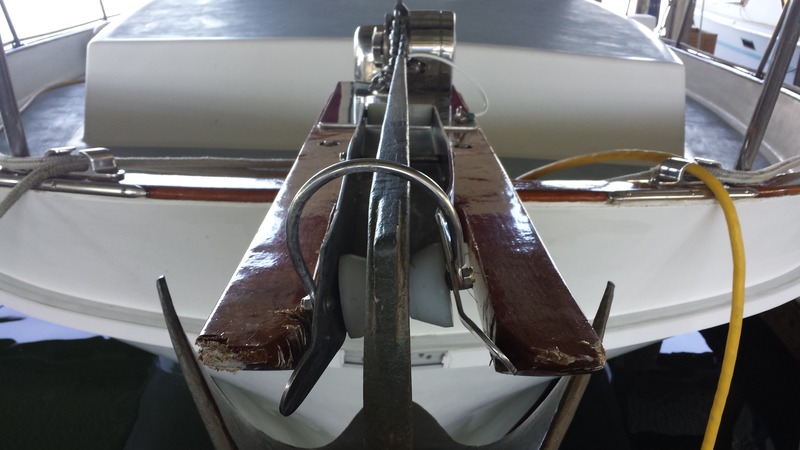
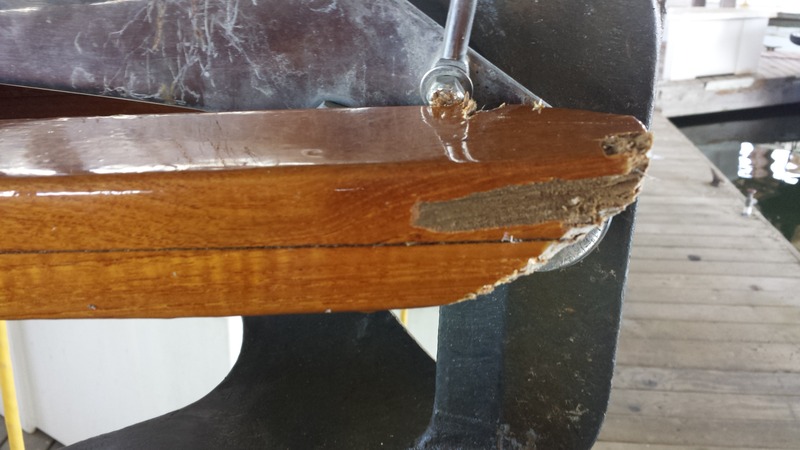
Caprail
Stbd:

Port:
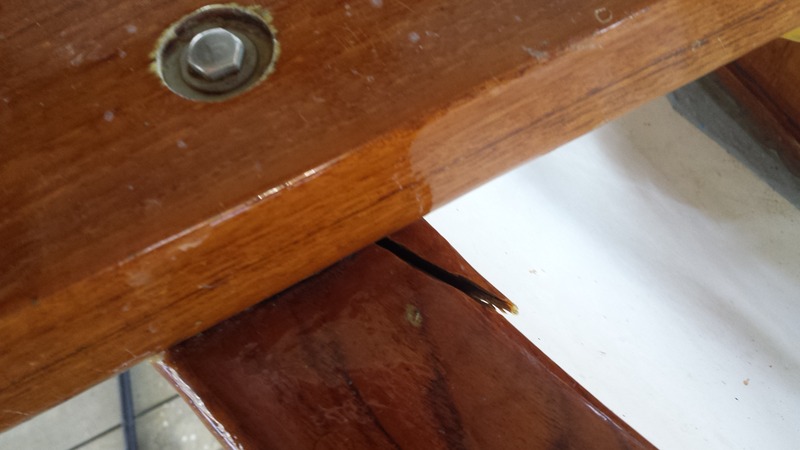
Underside of pulpit - cracked
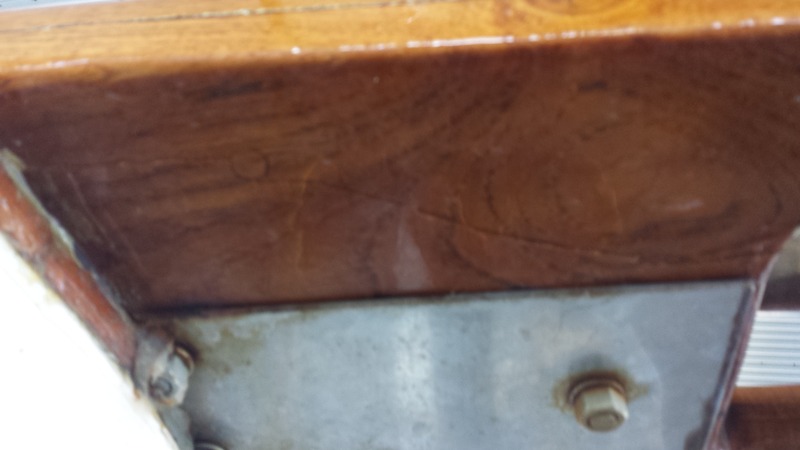
Fortunately, the other guy's insurance has stepped up to the plate and accepted liability. Now the repairs begin.
The yard wants to remove the bow rail and 30" of caprail from the pulpit to the first scarf to inspect for fiberglass damage. My first impression is to pull the windlass and pulpit first and have a gander underneath.
Here's a couple pics of what it's supposed to look like. Note the 3 lag bolts across the top into the caprail and underlying fiberglass. The stbd and center ones appear to have popped a bit.

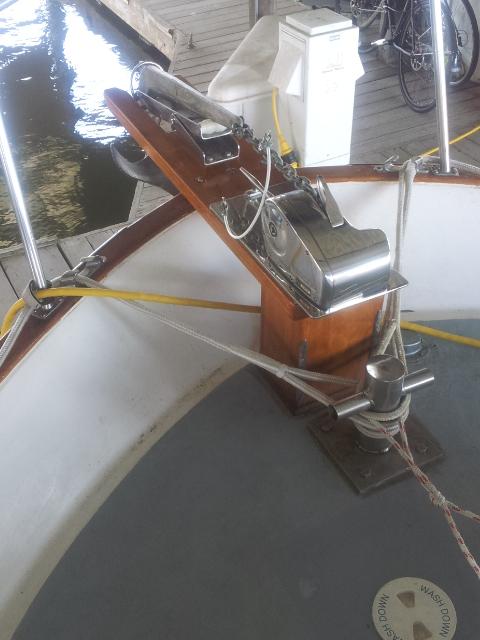
If the caprail is just superficially cracked and can be repaired and no damage is apparent or likely under the caprail, I'd rather not have it all removed, replaced and revarnished to match. It should be easy to fix a couple of stripped out lag bolts in a structure that has proven to be 'frangible' yet strong and reliable. I definitely need a new anchor roller and teak pulpit. Also the rubrail is missing a chunk from the bow after the encounter, so I'm expecting a new rubrail.
I want it fixed right, but I'm not real anxious to be out of the water for any longer than necessary. Since I engineered and installed the pulpit and windlass, I have a pretty good feel for its strengths and weaknesses. But sometimes when you're standing this close, you can't see the forest for the trees. What do you guys think? Am I crazy for not letting the yard and insurance company take it apart to see if it's damaged beyond a stripped lag bolt or two?
We were anchored near a 65 Hatteras during the airshow. The afternoon ebb was flowing with 10-15 kt winds in the opposite direction out of the WSW. We were anchored west of Alcatraz Island for protection from the current, but near the north end and experienced some occasional swings due to eddy currents and winds. For the most part, we were lying on a westerly heading into the wind with him located about 50 ft north of us. We were close enough to talk to each other about our proximity and made adjustments to rode so we were both pleased with the positioning.
During the Blue Angels performance, my wife called me to the bow "right now". The Hatt had drifted west of our position and was now perpendicular to the wind and our alignment into the wind. We were tight on anchor as he drifted slowly into our anchor pulpit. The pulpit poked 2 holes into the masonite panel above his caprail and below his handrail. These holes can be seen in the photo below by the black arrow. Wave action while coupled forced my bow pulpit to pop vertically and pulled a couple lag bolts loose from the top of the pulpit.

I was on the bow as they were closing in within a few feet of our bow, but I was unable and unwilling to place my hand in the boat's path to release the anchor rode from its cleat. Once the boat's slide into us stopped, I was able to release the rode, start engines and back off from the Hatt. No further damage was incurred during the 'uncoupling'.
Here are some shots of the damage:
Pulpit, rub rail and anchor roller damage. The bolts on top of the pulpit have pulled loose from the vertical loads.


Caprail
Stbd:

Port:

Underside of pulpit - cracked

Fortunately, the other guy's insurance has stepped up to the plate and accepted liability. Now the repairs begin.
The yard wants to remove the bow rail and 30" of caprail from the pulpit to the first scarf to inspect for fiberglass damage. My first impression is to pull the windlass and pulpit first and have a gander underneath.
Here's a couple pics of what it's supposed to look like. Note the 3 lag bolts across the top into the caprail and underlying fiberglass. The stbd and center ones appear to have popped a bit.


If the caprail is just superficially cracked and can be repaired and no damage is apparent or likely under the caprail, I'd rather not have it all removed, replaced and revarnished to match. It should be easy to fix a couple of stripped out lag bolts in a structure that has proven to be 'frangible' yet strong and reliable. I definitely need a new anchor roller and teak pulpit. Also the rubrail is missing a chunk from the bow after the encounter, so I'm expecting a new rubrail.
I want it fixed right, but I'm not real anxious to be out of the water for any longer than necessary. Since I engineered and installed the pulpit and windlass, I have a pretty good feel for its strengths and weaknesses. But sometimes when you're standing this close, you can't see the forest for the trees. What do you guys think? Am I crazy for not letting the yard and insurance company take it apart to see if it's damaged beyond a stripped lag bolt or two?


